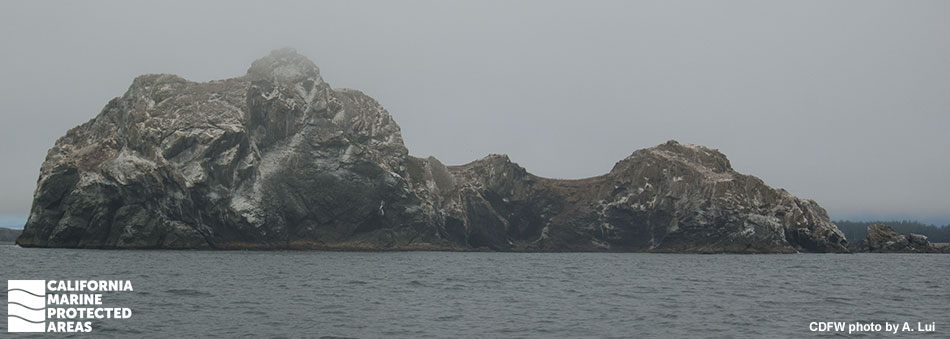
Overview
Castle Rock is located about a half mile off Crescent City. Rising steeply from the sea, this 14-acre isle features sheer cliffs, a pebble beach, rocky reefs, and vegetated marine terraces. With its large size and wide assortment of structural features, Castle Rock provides an ideal breeding and resting location for migratory seabirds and marine mammals, and a suitable permanent home for an abundance of other marine life. Multiple species of birds breed and rest here, including the common murre, tufted puffin, Brandt’s cormorant, pelagic cormorant, rhinoceros auklet, and Leach’s storm-petrel. Pacific harbor seals, northern elephant seals, California sea lions, and Steller sea lions haul out to rest on Castle Rock's pebble beach and rocky shoreline.
Extending 300 feet seaward and surrounding Castle Rock itself, Castle Rock Special Closure covers 0.05 square miles of ocean along the outer edges of Castle Rock. Boating is prohibited year-round within the buffer of protected waters around Castle Rock, to prevent human disturbances to the fragile wildlife communities found there.
Regulations
Boating and access are restricted. Except as permitted by federal law or emergency caused by hazardous weather, no vessel shall be operated or anchored at any time from the mean high tide line to a distance of 300 ft. seaward of the mean lower low tide line of any shoreline of Castle Rock, year round.
No person except employees of the California Department of Fish and Wildlife, United States Fish and Wildlife Service, National Oceanic and Atmospheric Administration, or United States Coast Guard during performance of their official duties, or unless permission is granted by the California Department of Fish and Wildlife, shall enter the area.
California Code of Regulations Title 14, Section 632(b)(4)(opens in new tab)
Quick Facts
MPA size: 0.05 square miles
Shoreline span: 0 to 15 feet
Habitat composition*:
- Rock: 0.10 square miles
- Sand/mud: 0.02 square miles
*Habitat calculations are based on three-dimensional area and may exceed the total MPA area listed above.